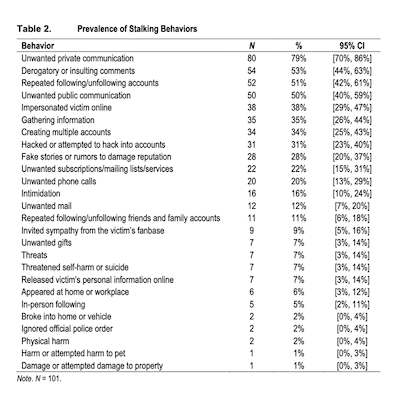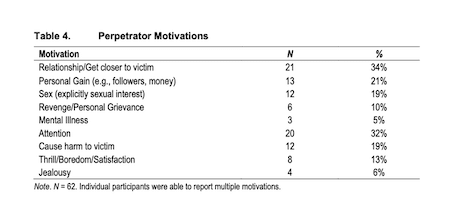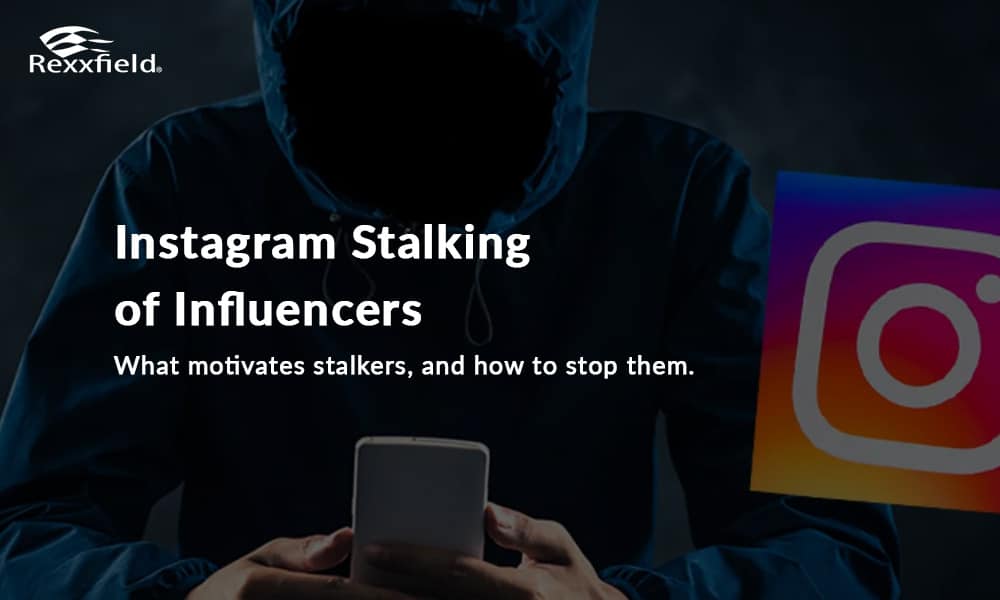The vulnerability of social media influencers to online stalking has been extensively researched by Will Fox on Instagram. This study is the first to explore the prevalence and patterns of stalking behavior experienced by influencers.
According to the study, stalking victimization rates among Instagram influencers are significantly higher than those observed in the general population through previous surveys conducted in Canada, the United States, and the United Kingdom. These rates suggest that influencers are at a greater risk of being stalked, with a prevalence rate of 51% throughout their career likely attributed to their status as online public figures.
What Types of Stalking Behaviors Are Experienced by Influencers on Instagram?
According to the study, unwanted private communication was the most prevalent stalking behavior experienced by influencers, with 79% reporting it. Derogatory or insulting comments were reported by 53%, unwanted public communication by 50%, and the creation of multiple accounts by 34%.
The majority of unwanted private and public communication occurred through Instagram direct messaging (73%), posts (74%), and liking posts (52%). Instagram live feeds were less commonly used (14%).
Most attempts to gather information were made within the victim’s fan base (66%), with personal and contact information being the most sought after (69% and 54%, respectively), followed by humiliating information (29%). Multiple accounts were mainly created to bypass blocks or bans (85%) or to contact the victim while pretending to be someone else (56%).
Fake stories aimed at damaging the victim’s reputation were mainly spread within the victim’s community (71%). Spreading stories to the victim’s professional contacts was less common (29%), as was spreading them outside the victim’s community (21%).
The study reported five instances of in-person stalking, with three perpetrators (60%) attempting face-to-face contact, one of whom (20%) tried physical contact. Three (60%) watched the victim from a short distance, while one (20%) watched from afar. Three (60%) followed the victim on foot or in a vehicle, and three (60%) trespassed on the victim’s property. Three (67%) appeared at the victim’s home, while two (33%) appeared at their workplace.

Source: Thesis by Fox William
What Drives Instagram Stalkers?
Out of the participants, 34% stated that their Instagram stalker was seeking a relationship or attention from them. 19% reported explicit sexual interest from their stalker, while 19% said that their perpetrators were seeking to cause harm. Others reported that their stalkers were motivated by a personal grievance (10%), acting out of jealousy (6%), seeking a thrill (13%), or had mental illness (5%).
Most perpetrators are between 20-40 year old males.
Most of the stalkers were males aged between 20 to 40 years old. Out of the 40 participants who were able to identify the age of their perpetrator, one (3%) was under 18, six (15%) were between 18 to 24 years, ten (25%) were between 25 to 29 years, eight (20%) were between 30 to 39 years, nine (23%) were between 40 to 49 years, and six (15%) were 50 years or older, with the oldest perpetrator being 60 years old. The reported ages ranged from 16 to 60 years, with a median age of 32 years.
Out of the 49 participants who indicated their perpetrator’s gender, 35 (71%) were male and 14 (29%) were female perpetrators. Most of the opposite-sex stalking perpetration involved male perpetrators targeting female victims, with 35 (72%) reports. On the other hand, only 3 (6%) male victims were targeted by female perpetrators. There were 11 (22%) reports of same-sex stalking perpetration, with female perpetrators targeting female victims in all cases.

Source: Thesis by Fox William
Escalation of Online Stalking to Real Life Face-to-Face Encounters
Although less common, in-person stalking behaviors are a serious concern as they can lead to harmful outcomes. While only about 20% of derogatory comments and 43% of intimidation and threats were reported to occur offline, this suggests that online stalking may escalate to in-person perpetration. It is important to note that few violations of police orders were reported by participants. Attention should be given to cases where stalking moves from online to offline, as this can result in dangerous consequences. Examples of such escalation have been reported, such as in the case of Andreea Bolbea, who had a perpetrator harass her via email before flying to her home and repeatedly mailing packages to her and her family. In extreme cases, in-person stalking can lead to lethal physical harm, as seen in the tragic case of Jenae Gagnier. The results of this study suggest that directly harmful behavior is relatively rare in this population, but any escalation from online communication to in-person stalking warrants serious intervention, as it may indicate that the perpetrator is likely to attempt in-person contact.
The Challenge for Influencers in Handling Stalking Threats
Celebrities and public figures encounter a variety of stalkers, ranging from well-meaning admirers to hazardous criminals, and they must navigate these risks carefully to avoid any adverse publicity. Neglecting the issue can escalate the danger, but an exaggerated reaction could invite criticism and allegations of being overly dramatic. The dilemma of managing both safety and public image is a significant challenge for influencers and personalities.
Blocking or reporting abusive social media accounts may offer temporary relief, but it is not a permanent solution to cyberbullying. The anonymity of online platforms allows abusers to create new profiles and continue harassing victims. Confronting or removing the account is for most not an option, as their presence on Instagram is their livelihood and generates their income.
In order to effectively stop cyberbullying and harassment of influencers and celebrities, it is crucial to identify the offenders.
Professional cyberbullying and social media investigations can identify the abuser and provide compelling evidence that can hold them accountable for their actions. Depending on the severity of the situation, the victim can confront the perpetrator directly, send cease-and-desist letters through a lawyer, or involve the police to press charges. By taking these actions, victims can put a stop to the abuse, harassment, and defamation from liars, slanderers, and rumor-mongers. But what does a professional cyberbullying and social media investigation involve?
Rexxfield offers Discretion and Confidentiality
Rexxfield has developed innovative techniques and systems over the past decade that allow us to discreetly monitor online offenders, including stalkers and anonymous individuals, and identify Instagram stalkers. Our methods are fully legal, admissible in court, and produce convincing evidence that would be difficult for victims or plaintiffs to obtain otherwise, without resorting to hacking.
Rexxfield has served celebrities, billionaire entrepreneurs, heads of state and royal families. But, you will never find any public reference to these case, except where the client has chosen to go public with their harrowing experience, such as the Brewdog founder James Watt.


